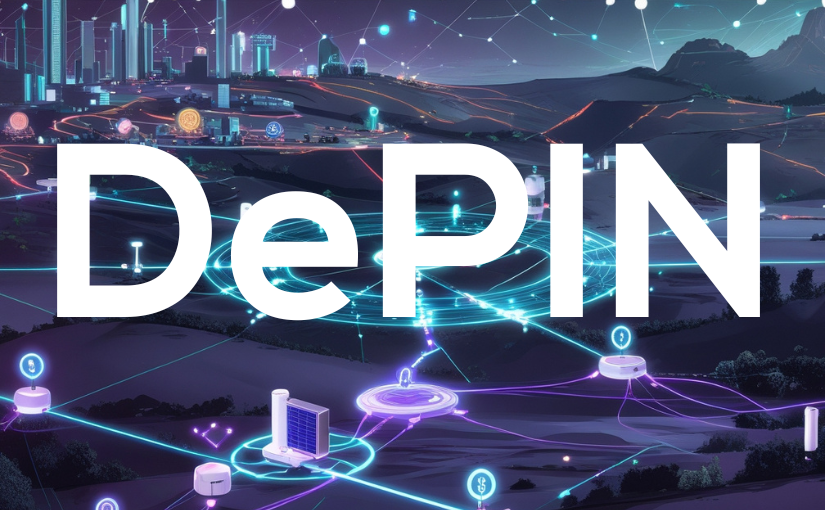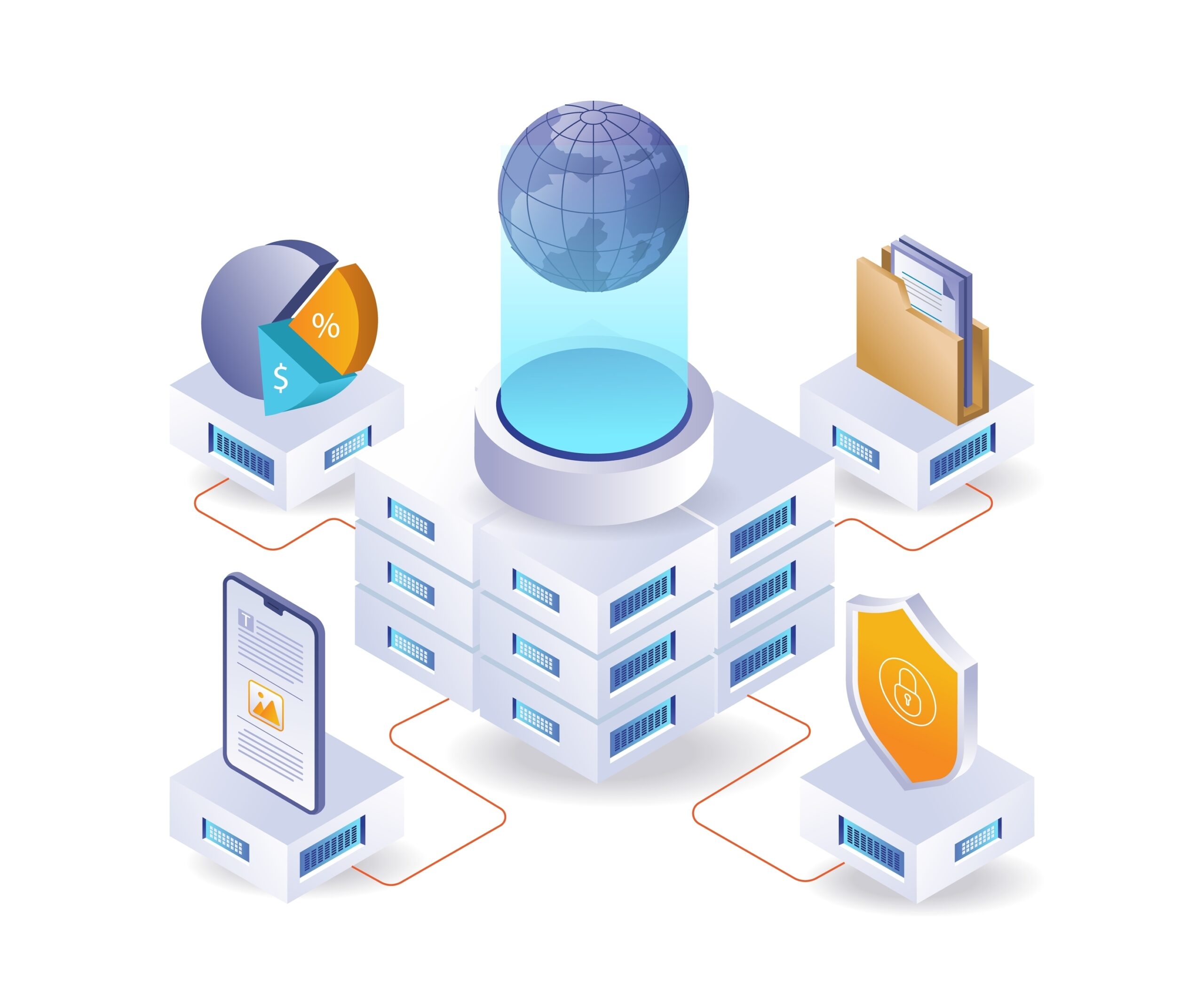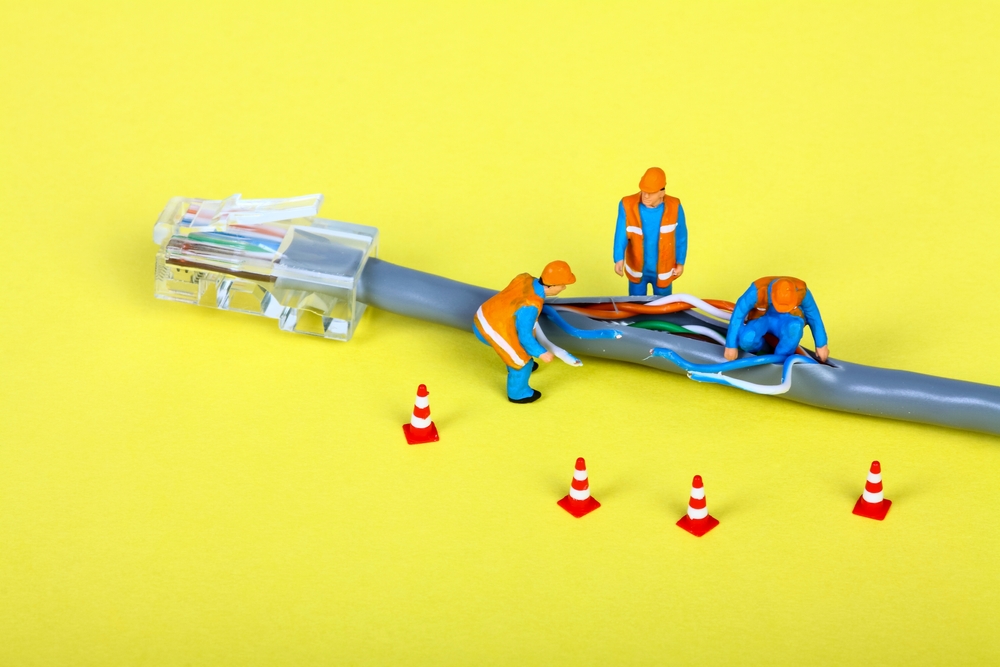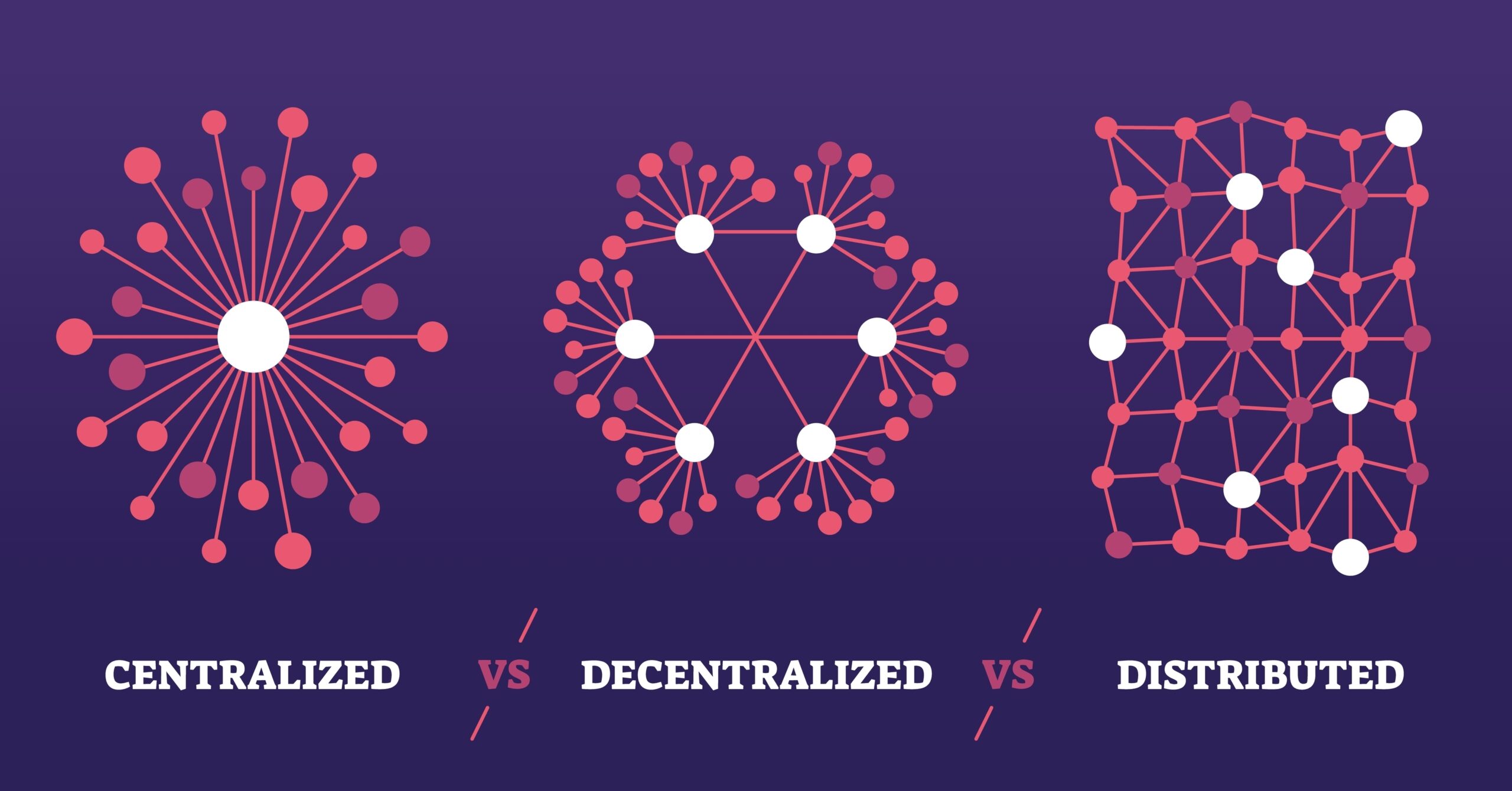Decentralized Physical Infrastructure Networks Explained

We’ve all been there: that crucial Zoom call cuts off mid-sentence, your late-night Netflix binge is abruptly ruined by buffering, or suddenly, advertising algorithms know your secrets a little too well—the endless frustration of depending on highly centralized services is real. But here’s the good news: decentralized networks might just be the missing link we’ve all been hoping for—a way to finally enjoy reliable internet without privacy nightmares, maddening outages, or hefty fees standing in our way.
Why Traditional, Centralized Infrastructure Usually Lets You Down

Here’s the thing—most internet and online services you use today are built on centralized networks. That means if one part fails, the entire system could totally collapse. Let’s briefly see what’s wrong with that:
High Vulnerability to Outages and Downtime
Picture this: you’re on a tight deadline, ready to submit a crucial presentation, but just as you hit send—bam, the connection drops. Traditional centralized networks have single points of failure. If something goes wrong at one central node, your whole network is compromised. And trust me, Murphy’s Law always ensures it’s at the absolute worst possible moment.
- In 2021, an outage at Fastly (a single CDN provider) took down major websites like Amazon, Reddit, and Spotify for over an hour. Just ONE provider caused chaos.
- Meta (formerly Facebook) suffered a six-hour-long outage in 2021 stemming from centralized network issues, affecting billions of users.
Lack of Data Control and Privacy
Ever noticed how big tech companies always seem to know exactly what you like and are bombarding you with those suspiciously targeted advertisements? Fact is, when you depend on major centralized corporations to store your data—privacy often takes a backseat.
- A study by Pew Research Center found 79% of Americans feel concerned about companies misusing their personal data without consent.
- Major scandals like the Cambridge Analytica saga clearly illustrate how centralized structures facilitate huge breaches of privacy, with 87 million Facebook profiles exploited inappropriately.
Your data should belong to YOU—not to some faceless corporation that sells, uses, and mishandles the information you trusted them with.
High Costs and Limited Access
Then there’s the money side of things—centralized networks usually mean expensive fees, rigid subscription plans, and limited access, especially if you’re in a remote area.
- In rural communities, broadband costs are often prohibitively expensive, with less-than-reliable service. Less competition means higher prices and worse quality.
- The World Bank reports nearly half of the world’s population still lacks primarily due access caused by high centralized infrastructure costs.
When service decisions rest solely with huge centralized providers, they tend to prioritize revenue over user satisfaction, affordability, or equal access.
There Has to Be a Better Solution, Right?
If you’re nodding your head thinking “I’ve experienced all of these!” you’re not alone. Luckily, there’s a smarter, better answer emerging—Decentralized Physical Infrastructure Networks, or DePIN for short.
Curious about how decentralized networks might be the answer to escaping outages, privacy nightmares, and high costs? Stick around—you’re about to find out exactly what’s behind DePIN, and why it’s quickly becoming a game changer.
What Exactly Are Decentralized Physical Infrastructure Networks?

By now you’re probably intrigued—DePIN sounds fancy right? Trust me, it isn’t rocket-science. Let’s strip away the jargon, ditch the buzzwords, and focus purely on what DePIN is about and why you should care.
Understanding DePIN – Minus the Fancy Jargon!
First, forget complicated terms. Imagine communities of everyday people just like you and me, sharing and running vital infrastructure—think Wi-Fi hotspots, cloud storage devices sitting in your basement, or even home solar panels—participating together in a network where everyone contributes and everyone benefits. There’s no massive corporation calling the shots or central servers vulnerable to outages. Instead, these networks live entirely on blockchain tech, transparently tracking everyone’s contributions and fairly rewarding each participant.
Decentralized infrastructure exists for different purposes, like:
- Internet connectivity: Regular folks create local Wi-Fi networks in their neighborhoods, securing better, cheaper, and censorship-resistant internet for their communities.
- Data storage: People saving encrypted files across the globe in a network of computers—goodbye expensive cloud subscriptions, hello distributed and private backups.
- Energy resources: Homeowners using solar panels or other renewable sources trading surplus electricity peer-to-peer, instead of depending on monopolistic utilities.
It’s community-led innovation in action. And blockchain is making this vision not only possible—but already very real.
“Decentralization is not just about having options—it’s about reclaiming power, choice, and transparency from corporations back into the hands of everyday people.”
Examples You Might Know Already
Maybe you haven’t realized it, but you’ve probably heard about projects that already embrace DePIN:
- Helium: Thousands of regular users around the world are already earning HNT tokens by providing decentralized wireless internet hotspots. It’s growing rapidly, with nearly a million hotspots deployed globally.
- Filecoin: Instead of stashing your sensitive documents in Dropbox or Google, Filecoin allows anyone to securely store encrypted data in a peer-to-peer network—safely, privately, and affordably. It’s a massive hit and already has over 16 exabytes (yes, exa!) of storage capacity online.
- Blockstream’s satellite: A groundbreaking decentralized communications network utilizing satellites in orbit, enabling global Bitcoin transactions—even if terrestrial internet goes down.
These examples aren’t theories—they’re living, thriving proof that DePIN works and is solving real-world problems. They’re creating real impacts in people’s lives and reshaping how we think about infrastructure.
But wait a second—by now you must be curious: how exactly does this decentralized infrastructure function without a big boss orchestrating it all? Keep on reading because what I share next will amaze you!
How Does a Decentralized Infrastructure Operate Without a Central Authority?

Have you ever wondered how a network can possibly keep running smoothly without one giant company or centralized authority pulling all the strings? It’s pretty natural to wonder, “Hey, isn’t someone supposed to be in charge here?” Seems almost magical—but actually, it’s simpler (and smarter) than you might think.
Blockchain and Smart Contracts at the Heart
Think of blockchain as the heartbeat of decentralized networks—it’s the tech that allows transparency and security without any big boss supervising everyone. Instead of a single server owned by a corporation, a decentralized network is run by hundreds or even thousands of individual nodes (mini-servers), each contributing resources and processing power.
What’s even cooler are smart contracts. These aren’t fancy paperwork, but automated digital agreements running on the blockchain, managing all interactions and ensuring everything runs fairly and smoothly. The blockchain tracks every transaction openly, leaving no room for secrecy or manipulation.
“Blockchains are essentially trust machines… they automate trust between parties who normally wouldn’t trust each other. And they do it incredibly efficiently.” – Don Tapscott (Author, Blockchain Revolution)
Incentivizing Users to Cooperate
But wait, how do you get thousands of strangers around the globe to invest their hardware or resources without someone bossing them around?
The trick? Rewards!
- Every participant contributing services earns tokens or rewards.
- The better, faster, or more reliable your node or service is, the higher your reward.
- These rewards aren’t just points—they’re actual cryptocurrency tokens with real-world value, which you can use, trade, or cash out for money.
For instance, let’s take Filecoin’s decentralized storage network. Users who provide storage space on their computers earn FIL tokens. Similarly, Helium participants running hotspot nodes earn HNT tokens for providing consistent internet coverage. That means you don’t just pay monthly fees to big corporations—you could be making money yourself just by sharing your resources.
In fact, research by Messari revealed over 75% growth in decentralized network participation last year alone, proving real people genuinely find this rewarding (literally!). Check the full stats here.
Sounds amazing, right? But you’re probably wondering— exactly which real-life headaches can decentralized infrastructure actually solve? Sit tight, because that’s exactly what we’re looking into next!
What Real-Life Problems Does DePIN Really Solve?

Let’s get real for a second—you might think decentralized infrastructure sounds great, but how exactly can it make your life genuinely better? Well, grab your coffee and lean in, because here’s how DePIN is already making real waves in solving everyday frustrations.
Reducing Network Downtime
How many times have you rushed to submit an assignment or hop on a crucial Zoom call, only for your internet to betray you at exactly the wrong moment? If we’re honest, we’ve all been there—it’s beyond frustrating. With traditional centralized setups, one glitch could take down a whole network (we’ve got nightmares from that notorious Facebook downtime).
Decentralized Physical Infrastructure Networks (DePIN), however, approach this differently. Networks like Helium have proven this point, creating countless distributed connection points worldwide. Because there’s no one central choke point, these networks withstand outages seamlessly. A recent Helium community report showed significant uptime improvements compared to traditional ISPs, especially during weather events or power outages. This helps ensure your crucial moments (and Netflix binges—let’s be honest here!) remain uninterrupted.
Enhancing Privacy and Data Ownership
We all hate the idea of big corporations watching our every move online. How uncomfortable does it feel knowing your personal info gets monitored, collected, sold, or lost in some data breach you hear about on the news?
This is exactly why decentralized infrastructure shines—your digital files and information no longer rest in the hands of one giant company. Blockchain-backed storage solutions, like Filecoin, encrypt data across multiple decentralized nodes, ensuring your private information stays genuinely private. In fact, a recent study by Stanford University found decentralized file storage significantly reduces vulnerability to data leaks, something that’s pretty much music to anyone’s ears after seeing endless big tech privacy scandals.
Lowering Costs and Democratising Access
Let’s face it, centralized providers don’t always play fair when pricing their services—especially in remote or less-developed regions. Ever compared your expensive ISP subscription to the spotty coverage you get at that cabin in the woods or rural vacation spot?
But decentralized infrastructure flips that script. Because regular folks participate in running the network, overheads massively reduce, leading to lower costs for everyone. Take Althea, for example—a decentralized internet service that brought cheap, fast internet to underserved communities in rural areas throughout Oregon and Latin America. Now that’s what democratizing essential services looks like in action.
“Decentralization gives back the power to the crowd; it creates a fair playground, making everyday services affordable and secure for everyone—not just privileged insiders.”
Pretty inspiring, right? I mean, who wouldn’t want reliable internet, actual online privacy, and cost-effective connectivity for everyone, regardless of location? It definitely makes me eager to know what’s in store next—like how regular, everyday people can tap into these benefits and maybe even profit from them.
Curious about how you personally can start taking advantage or even earning rewards with DePIN technology? Stick around because that’s exactly what I’m tackling next.
How Can You Participate or Benefit from DePIN?

By now, you might be wondering: “This decentralized infrastructure stuff sounds amazing, but how do I actually benefit from it personally—or better yet, how can I get involved?” Great question! Let’s chat about some practical ways you, yes you, can get in on the DePIN revolution.
Setting Up Your Own Node — Easier Than You Think!
Contrary to popular belief, contributing to decentralized networks doesn’t mean you need to have extensive tech knowledge or fancy equipment. Many platforms have made it extremely user-friendly—even for non-techy folks—to start contributing and reaping the benefits. In fact, for platforms like Helium, setting up your node (in their case, a wireless hotspot) is literally plug-and-play:
- Order your specialized hardware device.
- Connect the hardware to your internet connection.
- Follow instructions on your chosen platform’s app.
- Sit back, and let the network do the rest!
“The only way to discover the limits of the possible is to go beyond them into the impossible.” – Arthur C. Clarke
The exciting part? The more valuable your contribution to the network—like offering consistently good coverage on Helium or reliable storage space through Filecoin—the greater your reward potential. Simple, meaningful, and satisfying.
Earn Tokens for Your Contributions — Don’t Just Pay, MAKE Money.
For years we’ve been conditioned to tolerate paying monthly bills for internet, storage, even electricity—rolling our eyes yet sending payment every month without fail. But here’s something revolutionary: With DePIN platforms, not only can you reduce your expenses, you can actually start earning tokens for providing resources others need.
- Helium: Host a hotspot and earn HNT tokens simply by sharing your wireless coverage with your neighborhood.
- Filecoin: Contribute unused disk space and get rewarded with FIL tokens—turning an unused resource into profit.
- WeatherXM: Got space for a weather station? Provide real-time local weather data and earn tokens.
Feeling excited yet? I sure was the moment I realized this! Earning passive income by helping to strengthen the digital community feels surprisingly rewarding—emotionally and financially.
Boosting Privacy and Reliability Without DIY Hassles
Not everyone feels like hosting their own node, and that’s totally understandable. The good news: you can benefit from decentralized infrastructure networks just by switching to DePIN-based service providers.
- Replace conventional cloud storage providers (Dropbox, Google Drive) with decentralized alternatives like Storj or Filecoin to enhance privacy and reliability.
- Opt for decentralized VPN or internet providers to minimize censorship concerns or connectivity issues—check out Mysterium for example.
- Support renewable energy solutions through blockchain-based decentralized energy platforms like Power Ledger.
The shift doesn’t have to be sudden or drastic. Small, incremental changes like these not only help you regain control of your information and finances but also make you less vulnerable to outages and privacy invasion.
Sounds Perfect… But What’s the Catch?
Okay, so we’ve established DePIN makes real sense for real people like you and me—but is it really that easy? Before you jump in full throttle, perhaps you’d like to know more about potential pitfalls or challenges you might face?
Keep reading as I tackle exactly that—trust me, understanding the challenges ahead makes your DePIN journey transparent, enjoyable, and rewarding. Curious? You’re right to be—let’s see what’s lurking around the corner.
Challenges Faced by Decentralized Physical Infrastructure Networks

Alright, we’ve talked about all the amazing stuff DePIN can do—but let’s get real for a minute. Even with their massive potential, these decentralized infrastructure networks do face some significant hurdles. And I’m a firm believer in keeping things straightforward and honest, so let’s unpack those challenges together.
Regulatory Uncertainty – Can Governments Keep Up?
Governments typically like structure, control, and something familiar. DePIN, by nature, doesn’t really fit into the conventional package. For instance, remember how Helium, the decentralized wireless internet provider, faced regulatory scrutiny from the U.S. Federal Communications Commission over frequency usage? This shows regulators aren’t quite sure yet how to handle decentralized networks, leading to occasional pushbacks or confusion.
As crypto lawyer Jake Chervinsky once wisely said:
“Regulation always lags innovation. The faster we move forward, the wider that gap becomes.”
It’s kind of like being ahead of your time—but not necessarily in a comfortable way. You can bet policymakers and regulators are still scratching their heads, trying to figure out exactly how DePIN fits into current laws, taxes, and telecom regulations. Until clarity emerges, regulatory uncertainty will keep DePIN slightly in limbo, influencing its growth.
Reliability and Scale – Early Days Mean Growing Pains
You might already know that early-stage technologies aren’t always the smoothest ride, right? Well, decentralized networks face precisely this challenge: proving they’re as reliable as centralized giants, like AWS or Google Cloud. Users understandably hesitate to jump ship unless they see guaranteed uptime and lightning-speed service, especially if their business or personal comfort depends on it.
For example, Filecoin, a decentralized storage network, did have occasional challenges in its early stage—like transaction delays and node inconsistencies. Thankfully, they improved significantly over time, but those initial hiccups do scare off families or businesses without much tech patience.
Initial Costs and User Awareness – Breaking the Adoption Barrier
Imagine convincing your grandma to set up a decentralized internet node at home—it sounds tricky, right? Well, getting people to join DePIN involves upfront costs and even more importantly, education. For instance, running a Helium node (hotspot) does require initial hardware investment, roughly between $200-$500 depending on your setup. For some, that’s a tough initial leap without clear understanding or tangible incentives from the get-go.
- Initial hardware setup can seem cumbersome or costly for newcomers.
- Users sometimes hesitate because they simply don’t understand the tangible benefits clearly yet.
- Community and user education becomes crucial to bridge this adoption gap effectively.
However, and here’s the good news: these barriers I’ve listed aren’t insurmountable—they’re just early hurdles we typically see with innovative tech. Big movements always start small, don’t they?
So, could these networks realistically thrive and replace traditional infrastructures in the near future? Want a glimpse of what tomorrow holds for this disruptive tech? Keep on reading—you don’t want to miss what’s coming next!
What’s the Future of Decentralized Infrastructure?

You might be wondering—is decentralized infrastructure just a fleeting buzzword, or are we really looking at the start of a new tech revolution here?
Growing Adoption and Real-World Use Cases
I’ve been closely observing the cryptocurrency landscape for years now, and let me tell you, the adoption trajectory of Decentralized Physical Infrastructure Networks (DePIN) is genuinely exciting. Tech giants we all recognize—like Google or Samsung—are already experimenting with decentralized technologies or actively integrating blockchain solutions into their ecosystems (remember when Samsung integrated crypto wallets into their phones?). And that’s not all; grassroots movements championing decentralized, community-led networks are popping up everywhere, from rural America to bustling Asian cities.
Take the Helium Network, for example: what started as a small project aimed at decentralized wireless internet now has nearly a million hotspots crowd-sourced from ordinary people all around the globe. Helium’s success is proof that decentralization isn’t a futuristic dream—it’s already here, and it’s only getting stronger.
“Technology is best when it brings people together.” — Matt Mullenweg, Founder of WordPress
Integration With IoT and Smart Cities
Looking ahead, decentralized infrastructure networks won’t just improve your daily browsing or Netflix-streaming experience—they’ll likely transform entire cities and communities. Imagine a time soon when connected devices in your home communicate seamlessly with decentralized energy grids to provide reliable, cost-effective power. Or visualize city transportation systems automatically coordinating through transparent, blockchain-based infrastructure—no central control, no bottlenecks, just smooth, coordinated efficiency.
Studies already forecast there will be over 75 billion IoT-connected devices by 2025. That’s billions of devices needing secure, transparent, and resilient infrastructure. I don’t know about you, but I’d rather have them running on an open, decentralized network—where control, costs, and security remain in the hands of communities and individuals—rather than giant corporations.
How soon might this future realistically happen, though? And will it affect you directly? Keep reading to find out exactly where to get trustworthy info and how to stay ahead of the curve…
Recommended Reading

If you’ve made it this far, you’re clearly curious about what Decentralized Physical Infrastructure Networks have in store—maybe even eager to become part of this groundbreaking shift yourself. I get it. These networks seem promising and exciting, yet sometimes it helps to explore a bit more to truly picture yourself benefiting from them.
Cointelegraph’s Simple Guide on DePIN
To get more comfortable with what DePIN can offer you personally, one of my go-to resources is a straightforward guide from Cointelegraph. It breaks down the concept in a clear, jargon-free way, making everything click just right. If you’re looking to truly “get it,” Cointelegraph is a great place to start. See it yourself here: Cointelegraph – DePIN Explained.
Wikipedia’s Overview of Decentralized Physical Infrastructure Networks
If you’re the kind of person who appreciates a carefully structured overview to wrap your head around complex ideas (nothing wrong there!), then Wikipedia does an excellent job summarizing the essentials. It’s neatly organized, easy to understand, and presents the topic from a neutral perspective, offering solid background context. Check it out on their page: Wikipedia – Decentralized Physical Infrastructure Network.
But wait—before you run off into those fascinating reads, I want you to pause for just a second and ask yourself: could DePIN actually change the way you, personally, use the internet or produce and consume digital resources every day? Is this practical enough to actually fit into your life? If you want my honest and unbiased answer (backed by experience), stick around a bit longer.
Final Thoughts—Is DePIN Worth Your Attention?

Let’s Recap How DePIN Impacts Your Daily Life
So, we’ve discussed a lot about decentralized physical infrastructure networks (DePIN), but you might still be thinking—”Should I actually care about this?” The short answer: Absolutely.
Think about your daily technology frustrations—connection issues, privacy concerns, and expensive bills from centralized giants like big telecom providers. DePIN is a compelling answer to these headaches. By leveraging decentralized physical networks, you’re essentially boosting your reliability, accessing services with greater privacy, and potentially even earning rewards along the way.
Real-Life Scenarios Where DePIN Makes a Difference
Imagine this: Your area suffers a major internet outage because one centralized company experiences a service hiccup or cybersecurity breach. It’s happened plenty of times—think the massive AWS outage in 2021 that caused multiple businesses, from Netflix to Tinder, to go dark. While centralized platforms are vulnerable because they rely heavily on single points of failure, decentralized networks avoid this problem altogether with multiple access points and redundancy. With DePIN, one point of failure won’t compromise your movie night!
Or consider data privacy: Millions of people worldwide are growing increasingly wary of big tech selling their data or tracking their activities. According to Pew Research, around 79% of Americans report they’re concerned about how companies use their data. By switching to decentralized infrastructure like Filecoin or Helium, users directly control not only the services they subscribe to but also where and how their private data is stored. No more handing sensitive information neatly packaged to large companies—sounds great, doesn’t it?
Is It Time to Make the Jump?
Here’s the good news—you don’t need to be a tech wizard to see the immediate benefits of decentralized networks. There are various ways you can get started, from simply subscribing to DePIN-powered services that offer more reliable coverage and privacy, to running your own node and enjoying an extra income stream.
If you’re tired of constant outages, paying sky-high prices, and companies monetizing your online footprint, giving decentralized infrastructure a try seems like a no-brainer. Adoption is already growing fast. Even established tech providers are taking notice—Amazon, for example, has publicly shown interest in decentralized tech by exploring projects like decentralized DNS and creating decentralized blockchain infrastructure as part of their long-term strategy.
A Quick Look at the Numbers
- Helium has successfully onboarded over 950,000 IoT hotspot nodes worldwide, according to their recent network stats.
- Filecoin currently provides over 15 EiB (that’s Exbibytes—more than 17 million Terabytes!) of decentralized cloud storage capacity, with thousands of individual data-storage providers around the world.
- The decentralized renewable energy network Powerledger has launched trials in multiple countries, showcasing potential savings for users upwards of 10-20% on typical energy bills.
Clearly, DePIN solutions aren’t only theoretical—they’re making a real-world impact right now.
So, What’s My Final Take?
As someone who’s spent years researching and utilizing cryptocurrency innovations, I see decentralized physical infrastructure networks as exactly what decentralized tech promised us from day one—a simpler, fairer, and genuinely user-friendly digital world. DePIN offers tangible, practical solutions to everyday pain points, empowering regular users like you and me.
Now, will decentralized networks instantly replace every centralized provider out there overnight? Unlikely—change takes time, and challenges remain. But the trend is clear, powerful, and promising. As adoption increases, DePIN could reshuffle how we access internet, energy, mobility, and storage solutions forever.
In my opinion, embracing DePIN today means reclaiming some autonomy over crucial services we’ve traditionally left in the hands of giant corporations. Whether you’re motivated by reliability, privacy, savings, or an opportunity for passive income, it’s unquestionably worth your attention.
